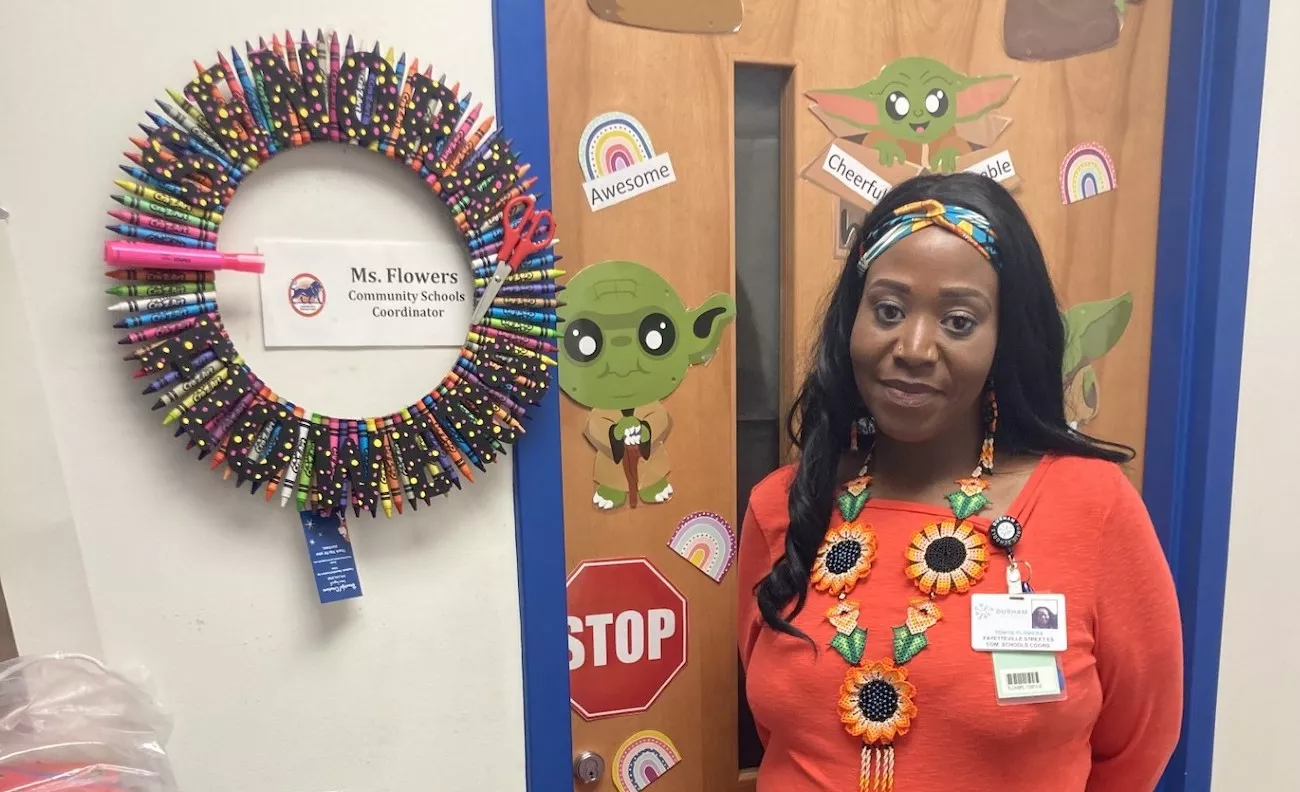Key Takeaways
- ESPs often grew up in and still live in the communities where they work, some went to the very schools they are working in.
- The strong ties to the communities helps ESPs know what families need. Community schools are designed to meet the most pressing needs of a community.
- Establishing strong, two-way communication with families is another goal of community schools. Many ESPs already know how to do that.
If you ask a parent about their interactions with their child’s school, they’ll often talk about support professionals – the staff member at the front desk who delivered a forgotten lunch or the bus driver who students and parents have grown to know from their morning greetings and conversations.
In the community, similar connections may run through the school nurse or counselor who coordinates care or a return to school with professionals. It can be a school security person collaborating with local police or school facilities manager working with local utilities or on a community event.
“ESPs also often grew up and went to schools here and now live in the district and know the people and the services,” says Geoff Morganstern, a social studies teacher for Anaheim Union High School District who is on release with a NEA grant to be the community school organizer for the Anaheim Secondary Teachers Association. “They are essential to community school efforts, which rely on the connections between the schools, families and the people and organizations in the area”.
NEA has been a vocal advocate for community schools. They “meet the social and emotional and academic needs of their students,” NEA President Becky Pringle has said, calling for the expansion of community schools nationwide. “This is a model that can and should be everywhere.”
As the concept gains popularity, it is increasingly clear how important support professionals are to the effort. An NEA description of the six pillars of community schools points out that health and student service professionals make key connections to community services, while food service staff address student hunger and nutrition.
Many students needing these services are identified by the school’s administrators and teachers, but also often by education support professionals, including bus drivers, secretaries, cafeteria workers, and custodians,” the NEA guide says. “Education support professionals are frequently the most immediate and direct conduit into the school community, for the majority live nearby.”
The ESP Connections
It also notes that not only do ESPs have links to the community, they connect schools.
“ESPs frequently serve more than one school site and may act as a liaison between schools, as well as between school staff and community agencies,” it notes.
Morganstern says they also play a key role on the district-wide and individual community school steering committees, bodies that do the hard work of establishing structures for the two-way communications and involvement between schools and the people and organizations outside their doors – the hallmark of the programs.
“As a teacher, I relied on ESPs for so much, and it is clear what a big role they should play in these efforts,” he says. “The family and community engagement specialist, the custodial staff and the maintenance people – they are all critical to the school and can play a key role with community schools.”
His district, where the structure is taking shape in 15 of its schools, is now working on ways to best use some $25 million it is receiving as part of $4.1 billion the state has designated for community school efforts,
Tanya Garcia is a community schools coordinator at Anaheim High School, points out that most community school specialists are themselves ESPs or classified employees. In a different way than support professionals in traditional roles in a school, they too may bring to the process unique and valuable skills and connections.
"I’d never been in the classroom, and when I took this position, I struggled with that a bit. How do I get educators on board with a community school initiative when I haven’t worked in their world”
She says, however, that like other ESPs, she had relationships in the community – in her case with nonprofits. “I had the networks in the community,” she says, “which is something schools otherwise must often build.”
The district hired her for that background, she believes, but then they established a role for a co-lead, and put a veteran teacher in that spot, Araceli Huerta.
“She and I work to bring together the school and the community perspective and use our knowledge about each for the benefit of our students and their families.”

How ESPs Help Community Schools Identify Needs
Tonita Flowers similarly has held a variety of positions within community organizations, but also in schools – then became the community school coordinator at Fayetteville Street Elementary School in Durham, NC, about a year ago. She says her broad background working as a parent liaison, ESL educator and in the legal and immigration systems help her more clearly see the needs of families and the ways that schools and services in the community can work together to meet them.
“It works,” she says. “If the community school program in the district were to go away, there would be major protests from people inside and outside the schools, I believe.”
She notes that one step in the establishment of community schools is “mapping” the resources that are available – and typically planners find ESPs are a key part of that process.
“As we did it, we realized they are essential to the work we do,” she says. “When you are looking for resources, the process leads you to them.”
Meredith Mullen, who is community school director with national Center for Supportive Schools and works at Mahatma K. Gandhi Community School, PS 23, in Jersey City, NJ, notes that along with living in the community often ESPs are parents of students or have their own connections to the schools.
She says that as part of the community school structure at PS 23, the chosen parent ambassador, Lekeitha Williams, became a key cog in the effort – as a former student at the school, parent of a child attending it and a manager of its cafeteria. Her sister is a clerk in the school’s front office.
“There are a lot of connections there. It’s an example of the inner-workings of a thriving community school and how its makeup includes all stakeholders,” Mullen says. “We are seeing more and more ESP and substitute positions being filled by moms and other local community members, which is a testament to a successful community school model.”
Garcia notes that all the security staff at her school and many others in the district grew up in the area and attended district schools.
“It means they know the city and they know about the experience of our students outside of school,” she says. “That’s invaluable.”



